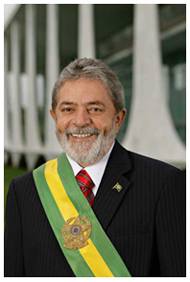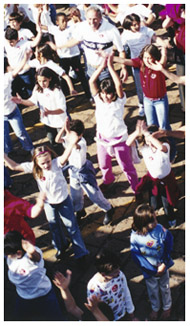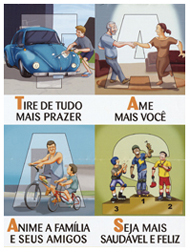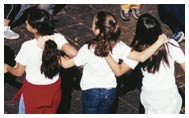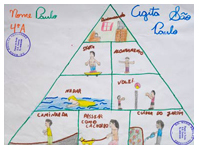"Move for Health"—WHO initiative, 2002
Brazilian President Luiz Inácio Lula da Silva, famous for his fondness for high-fat foods, gained weight after coming to power. In February 2005, inspired
by the success of Agita São Paulo, a campaign to introduce healthy lifestyles in the nation's capital, he announced that he would lead a national program
promoting nutritious food and regular exercise.
São Paulo residents have celebrated Agita Galera Day (Active Community Day) every year since 1997. The city's six thousand public schools and hundreds of private schools forego their regular
curriculum to focus on healthy lifestyles. Students participate in sports events and a neighborhood walk to the nearest green area or public square, where children hand out stickers and flyers promoting physical activity.
 Agita São Paulo promotional materials featuring the program's clock mascot, 2000
Agita São Paulo promotional materials featuring the program's clock mascot, 2000Courtesy Programa Agita São Paulo - CELAFISC
The clock mascot, a familiar icon of Agita São Paolo, symbolizes the recommended thirty minutes of activity and is featured on a wide variety of publicity materials for the campaign, including a replica of a box of prescription medication. Doctors are encouraged to get involved in the campaign by prescribing exercise to their patients, just as they would prescribe medication.
In support of Agita São Paulo, students design posters and write essays that promote the benefits of thirty minutes of exercise a day. The "exercise pyramid" illustrates chores and
everyday activities that are easy ways to reach this goal.
A national campaign, Agita Brasil, based on the program first developed in São Paulo, involves over three hundred organizations and has become a model for other nations in the region including Argentina, Colombia,
Costa Rica, Ecuador, Guatemala, Mexico, Panama, Paraguay, Peru, Uruguay, and Venezuela.
